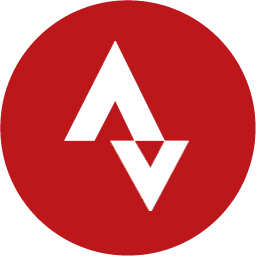After offering you a comparative of mountain bike helmets in order to know the different models of helmets that existed, we now offer you a small guide in order to discover how to choose your full face mountain bike helmet.
Why opt for a full face mountain bike helmet
First of all, while helmets are only mandatory up to the age of 12, we can't help but strongly advise you to put one on as soon as you get on your bike. And wearing a helmet is even more recommended if you ride a mountain bike because, as a reminder, head injuries are the leading cause of death among cyclists.
When practicing enduro or DH, where you will sometimes ride fast in winding and often trapping descents, composed of roots, rocks and stones, we can only recommend you to wear a full-face helmet in order to be protected 100%. Indeed, unlike wearing a classic helmet, the full-face helmet protects, in addition to the skull, also the neck (like all-mountain helmets) but also and especially the face. This will be useful not only to protect you from branches but also and especially in case of a fall on the face.
How to choose your full face mountain bike helmet.
When it comes to choosing your helmet, the ATV discipline you're going to ride will be key. If the offer of choice of full-face helmet intended for ATV on the market is consequent, it will already allow you to make a preselection that will then be refined according to your budget. For a full-face helmet, the first prices are around 100€ while the highest-end models can exceed 500€. The higher you go, the more lightweight, ventilated and comfortable helmets you will get.
And don't forget that for a helmet to protect you effectively, it must be perfectly fitted to your size. This is even more the case for full-face helmets: that's why it's highly recommended to try them on before you buy, as not all helmets will necessarily fit you.
Among full-face helmets, there are two models: the classic full-face helmet and the hybrid full-face helmet, that is, with a removable chin strap. We will now discover how to choose your full-face helmet and what are the advantages and disadvantages between the two models.
The "classic" full face mountain bike helmet
If you ride DH, you'll have no choice: you'll absolutely need a full face helmet to protect your head. If this is the only discipline you practice on a mountain bike, and you are going downhill at high speed, don't neglect the choice of your protective equipment and even less so that of your helmet. So opt for a helmet dedicated to DH, heavier and less ventilated, but with reinforced protection both against direct impacts but also against concussions thanks to the MIPS technology present on some models.
If you practice enduro, you will have the choice between a classic full face helmet or a modular full face helmet. Initially, let's focus on the classic full face mountain bike helmet with the fixed chin strap. Previously reserved for downhillers, with the rise of enduro, these helmets became lighter and more ventilated to meet the demand of mountain bikers who wanted to be effectively protected on descents but suffered from heat on climbs because of their helmets.
The Modular Full Face MTB Helmet
To meet the demand of enduro riders, some brands have also developed models of full face mountain bike helmets known as hybrid or modular with detachable chin strap. Indeed, some riders sometimes rode with two helmets: a full-face helmet for downhill riding and a classic helmet for uphill riding that they hung on their backpack.
The main advantage of the model is having a 2-in-1 helmet and therefore not being forced to carry two helmets. Thanks to the detachable chin strap, the modular full-face helmet thus transforms into an all-mountain helmet for climbs, thus preventing mountain bikers from overheating under their helmets.
However, this requires stopping at the top of each climb to fasten the chin strap and at the bottom of each descent to remove it. The problem is that this is restrictive in the long run and can lead some mountain bikers not to put the chin strap back on before starting a descent and thus cause more or less serious injuries in case of a fall. This helmet is therefore rather to be reserved for those who practice enduro in the mountains, that is to say, who will make a single descent after a climb and not to those who make a multitude of small climbs and descents. Otherwise, gare to the accident!
Now that you know how to choose your full-face mountain bike helmet, how about learning about the best enduro mountain bike helmets or how to choose a child's mountain bike helmet?






